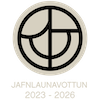Almenn verkefni 2020
Almenn verkefni 2020
Heiti verkefnis : | Einkenni jarðskjálftasvörunar hraunlaga undir vegum og brúm út frá mælingum á jarðóróa | |
Verkefnastjóri : | ||
Stutt lýsing á verkefninu: | ||
The geological condition known as “rock” is desirable as foundation for structures such as bridges, and also for roads, due to the low seismic wave amplification, known as “site effects”, that is expected on hard geological material. In Iceland, this site condition is rather prevalent due to the generally thin and easily removable topsoil exposing older bedrock or more recent volcanic lava-rock. However, recent site effect investigations in Iceland using recorded earthquake ground motions and microseismic measurements on alternating layers of lava-rock and soft sediments have shown markedly different site effects than on firm older bedrock. Important examples are the stark differences in site effects between the western abutment of the old bridge over Þjórsá river and the eastern side on bedrock, the towns of Hveragerði and Selfoss that are built on top of lava fields under which softer sedimentary layers are located (e.g., the expansive Þjórsá lava), and on lava layers on the north side of Reykjanes. These unique Icelandic site conditions may, therefore, have important practical implications for seismic design of roads and other structures. However, such conditions are not considered in the seismic design criteria specified in the current version of the Icelandic building code (i.e., Icelandic National Annexes to Eurocode 8). In this study, therefore, a comprehensive and reliable friendly framework based on the analysis of seismic ground motion data will be developed to quantitatively determine the physical parameters of the near-surface soil structure, with special focus on those alternating lava-rock and sedimentary layers. Moreover, to develop site amplification factors for these profiles that will find direct practical applications in seismic microzonation, earthquake-resistant design of lifeline and service networks (e.g., roads, bridges, power transmission networks, pipelines, water, and sewage systems) as well as urban planning. | ||
Tilgangur og markmið: | ||
The long-term objective of this project is to improve the understanding of site-specific characteristics in different geological conditions across Iceland and improve the seismic design criteria for infrastructures and lifelines (roads and bridges). The short-term purposes of this project will be achieved by addressing the following research questions: (1) How and to what extent, we can identify the underlying site conditions from seismic recordings. To address this issue, we outline a rigorous physical and statistical method to identify the subsoil physical parameters and the associated uncertainties. The proposed method is expected to be applicable to two types of common Icelandic soil conditions:
The latter is a common subsoil feature in geologically younger parts of Iceland due to the basaltic volcanism or since the end of the last ice-age, where basaltic lava has flowed over a sedimentary cover. (2) How and to what extent, we can improve aseismic design criteria to mitigate seismic risk for key service infrastructures, roads, and bridges. We aim to improve an advanced tool based on Bayesian statistics to evaluate the reliability of different site-effect proxies for different soil structures in Iceland. For these purposes, the following milestones are expected over the duration of this project:
| ||

